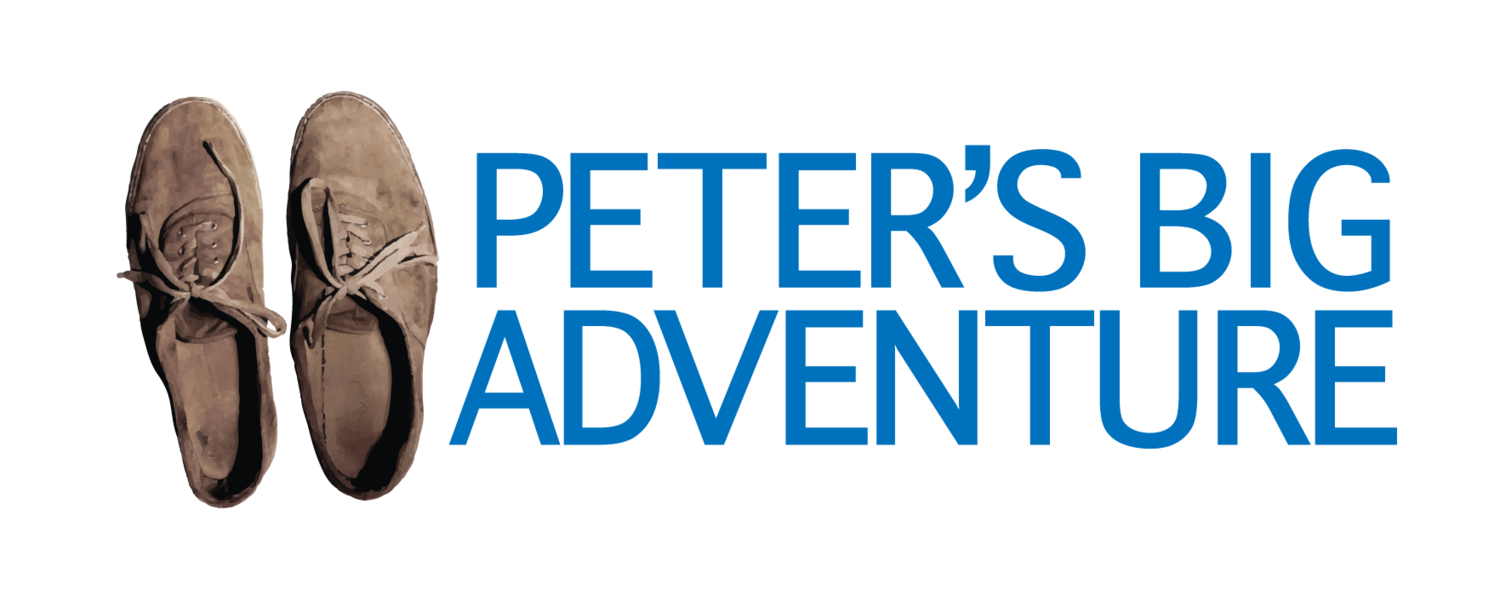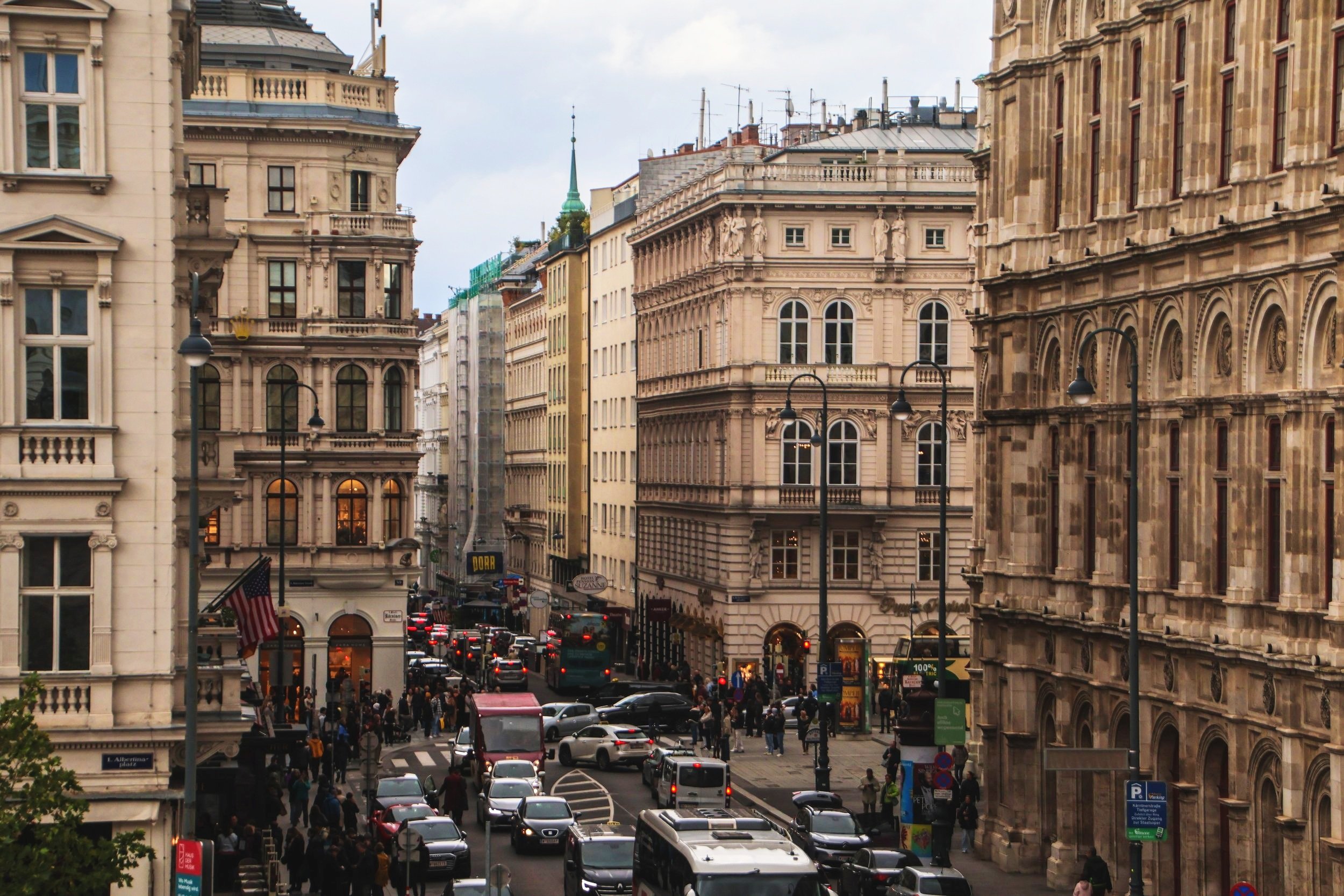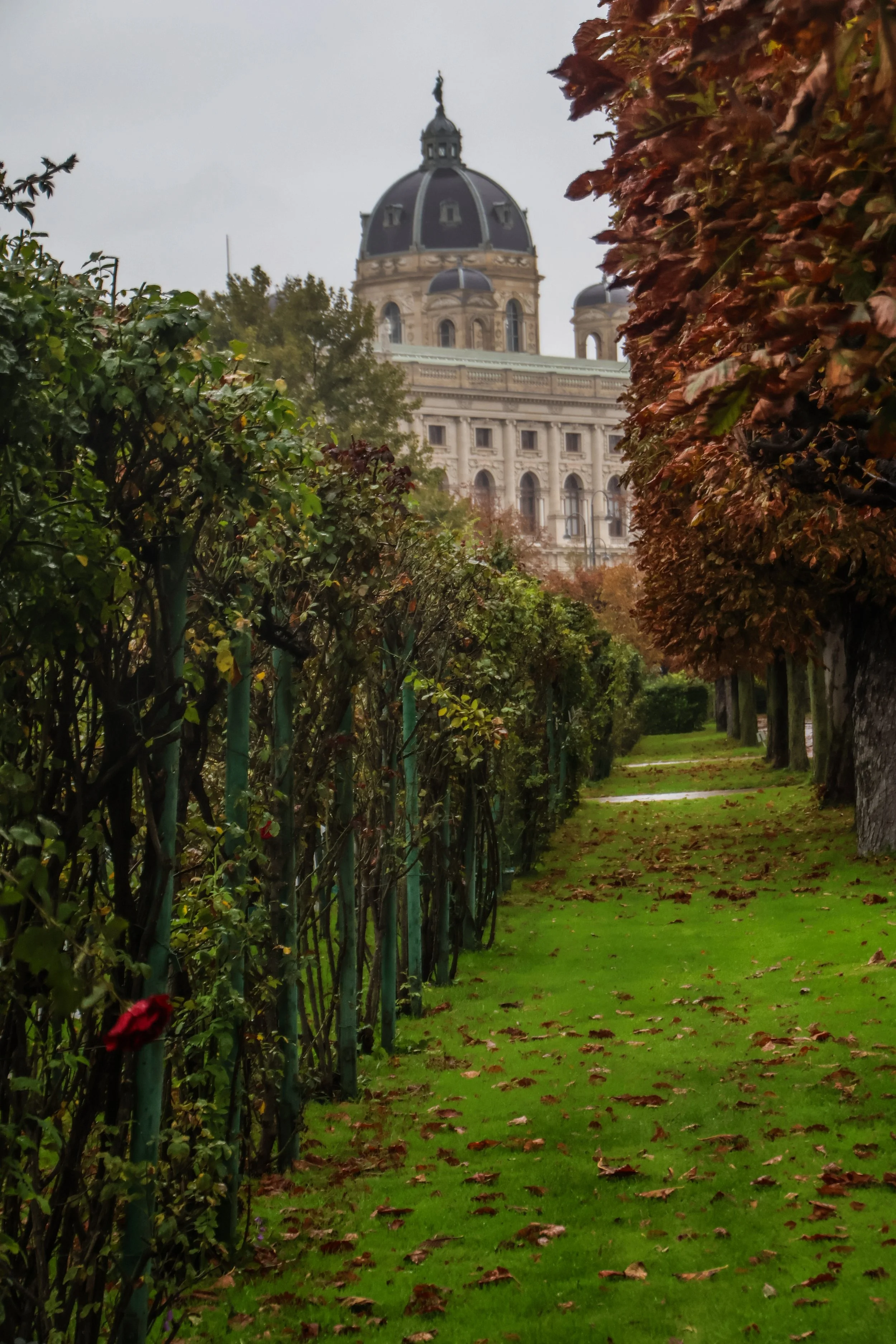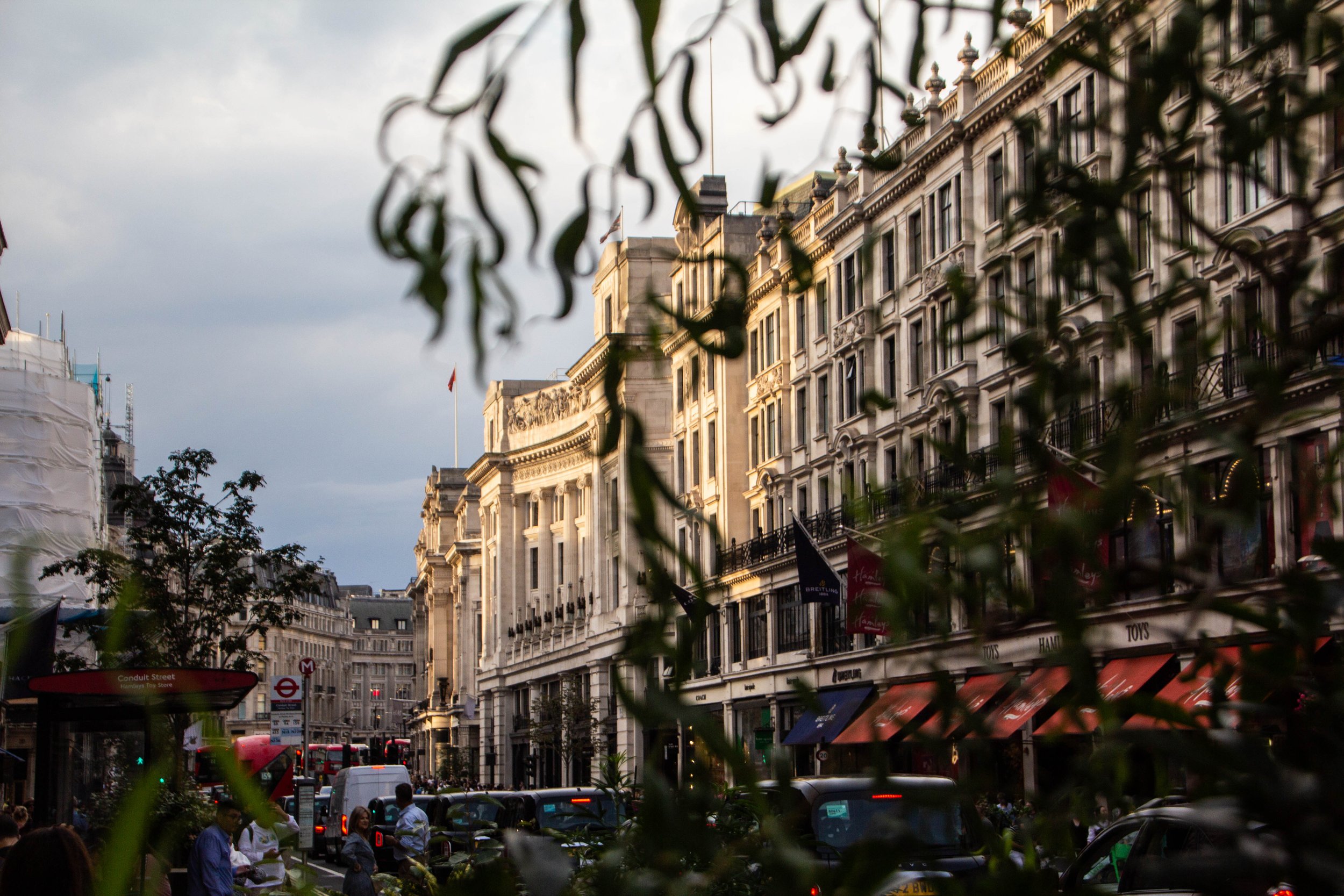Welcome… to the spy capital of the world!
*thunder crashes, scary music plays*
I’m talking (of course) about Vienna, Austria.
At this point, you may be asking yourself, “hold up… did espionage play some sort of role in Peter’s visit to Vienna?”
Kidding. It absolutely did not. But, this is a real thing in Vienna.
An Introduction to Vienna
Vienna. It has got a reputation for being one of the most beautiful and most “livable” cities not just in Europe, but in the whole world. And that reputation is very well-deserved! But to me, the geopolitical angle is much more interesting that the generic wiki-tourism preamble. So, why am I saying that Vienna is the “Spy Capital of the World”? Well, I can’t take credit for this designation; it’s a “thing.” If you look it up on YouTube, you’ll find all sorts of interesting explainer videos on this (here’s a good one from Versed). I actually think this is a really good segue into explaining Vienna as it stands today, so here’s the quick version…
In the past 20 years, Vienna has become a real center of gravity for the world of international espionage, especially for nations that are generally considered to be “anti-West” such as China, Russia, and Iran. There are—apparently—hundreds of individuals based in Vienna with official government/intergovernmental job postings that are actually ~*camera zooms in on the speaker from a different angle*~ spies! And, ironically, this information is well-known! So, how did Vienna become an industry-town for espionage?
Well… Austria is one of only 21 states in the world that claims complete geopolitical neutrality. In fact, this neutrality was actually a precondition of Austria’s existence as an independent country, and is therefore baked into their constitution in some pretty hard-to-undo ways. You see, in the years immediately following WWII, Austria did not exist as a state. Its western regions were occupied by France, the US, and the UK, while its eastern half (which is where Vienna is located) was occupied by the Soviets. In order for Austria to exit this period of occupation and regain its sovereignty, the great powers decided that it would serve as a “buffer state” between the West and the USSR.
As I understand it, modern Austrian regulations on espionage only outlaw activities that could be harmful to Austria itself. So, if you want to spend your time on Austrian soil doing something harmful to literally any other country in the world, Austria’s policy is this: 👍
Given its strategic and symbolic location at the crossroads between eastern and western Europe, it shouldn’t come as a huge surprise that Russia’s intelligence services are extremely well-represented in Vienna. From what I gather, Austrian citizens are far from ambivalent on this matter; this is the subject of some intense domestic political controversy! And, understandably, Austria’s own foreign intelligence service has pretty much been quarantined by Western countries.
So… what does that mean for our visit to Vienna? Probably nothing whatsoever. I am just fascinated by theses sorts of geopolitical dynamics and they make for really interesting context when I travel. Vienna is definitely the sort of place where a spy movie could be set, and the ominous gray clouds that hung low over the city during my visit definitely added to that vibe. I’d like to think that—at some point in my trip—I unwittingly walked past a couple of spies having a covert meeting in a park or a coffee shop. 🕵🏻♂️
Clearly I have watched too many spy movies.
Exploring Central Vienna
During my visit to Vienna, I was lucky to have two long-time Vienna residents take me under their wing to show me around. Big thanks to them, especially for the walking tour of Vienna! It did not disappoint.
For starters, Vienna is undoubtedly one of the most beautiful cities in Europe—which is another way of saying ‘in the world’. I’ve been to a good amount of cities myself—both European and not—and Vienna certainly ranks very highly on my personal list. The primary language spoken here is German, and the German name for this city is “Wien”, so you will see this word appearing occasionally throughout the gallery below.
Incredibly, this was actually my first foray into the German-speaking world. And I found it to be quite intoxicating! I will absolutely be returning to Austria soon, and Germany is still a giant blank spot on my map as well. There were 4 articles in queue on Vienna, during which we will explore the historical, classical, and contemporary dimensions to this great city… but before we dive into all of that, I’d like to just share some photos from walking around this magical city under the oppressive, gray skies. It’s a vibe.
Some Interesting Details of Vienna
There are immense amounts of things to explore and discover in Vienna… but luckily much of the legwork to sleuth out the cool stuff had already been done for me by my hosts, who are long-time members of this community. So, here are a few interesting details they shared with me that helped provide some texture to my understanding of Vienna.
Karmelitermarkt
Get ready for some long names that will be borderline unintelligible to the non-German speakers among you. Karmelitermarkt is an open-air market located in a central plaza of a part of Vienna called Karmeliterviertel. This is part of the city’s 2nd district, which also goes by the name Leopoldstadt.
Historically, Karmeliterviertel has been a Jewish neighborhood. There was severe damage done to this community under Nazi occupation, but today—against all odds—it has managed to maintain its cultural identity! Indeed, there are Jewish schools and religious sites here, as well as a large selection of kosher stores, restaurants, bakeries, etc.
But today, we’re just going to the market. It was a chilly October morning during our visit and I felt quite certain that I was the only "out-of-towner” in the mix. It was extremely cool to participate in local life and pretend to be Viennese for the day here! While my hosts were doing some shopping and catching up with the vendors—many of whom they knew well!—I wandered around with my camera to snap a few photos. I wish I could do my grocery shopping here. I’ll bet that every single thing you’ll see in the gallery below is organic, fresh, and amazing. After this, we stopped into a local restaurant for an amazing Turkish breakfast.
Vienna’s Ancient Origins
I’m sure you could have probably guessed that Vienna was old… but we’re about to go WAY back in time.
*harp music plays*
This area of Austria, which sits on the banks of the Danube River, has been inhabited since pre-historic times. The first formal settlements here were built by the Romans in 97 AD the as part of a defensive position along the river. At the peak of its Roman era, the population was thought to be about 15,000. It’s also believe that the famed Roman Emperor Marcus Aurelius died here in 180 AD during a military campaign.
When Vienna—the city that we know today—was finally founded in 1137 AD, there was already quite a bit of history here. In those early days, Vienna was affiliated with the Duchy of Austria, which was part of the Holy Roman Empire. Since then, the sovereign state corresponding to Vienna has evolved or changed a number of times. Notable periods in this timeline that set the stage for the world as we know it today include the Archduchy of Austria (1490-1804), the Austrian Empire (1804-1867), and Austria-Hungary A.K.A. the Austro-Hungarian Empire (1867-1918). Austria-Hungary met its demise in the throes of WWI, and hopefully you know the bullet points from there.
Walking around the cobbled streets of a historic European city, it is often the case that the past feels closer to the present than you might be used to… but in Vienna, this link to the past is really underscored in some pretty arresting ways. The photos below are from central Vienna, where the surface of the street literally gives way to the original cobblestones dating back to 1200 AD. 🤯
The Secret Passage-Ways of Vienna
This is where having a local like my host showing you around can really change your experience. Had I been on my own, I’d have likely wandered the streets like I usually do, relying solely on the map to get from point A to point B. But my host had other ideas.
He knew all of the short cuts around this city, which allowed us to cut through the middle of city blocks, through quiet courtyards, hidden urban passage ways, and sometimes through the hallways of buildings that I never would have guessed were open to the public. As a result, the city took on a new sort of density in my mind, like we were cutting through a big, ornate, fantasy bee-hive. This is about to be a very specific reference, but at times I felt like Emily Blunt in The Adjustment Bureau following Matt Damon through doors. And behind every door, was its own little world that was completely insulated from the streets just outside. The noise of bustling Vienna would give way to a peaceful silence in courtyards, hallways, churches… I don’t think a city has ever felt quite so three-dimensional to me as Vienna did here. Reflecting on this, it makes me think that I should start pulling on doorknobs around London (where I live) to see what is unlocked!
He took me into Viennese coffee houses, and we even stopped by little wooden sheds selling Maroni (roasted chestnuts), so I often had the literal tastes of Vienna on my tongue as we moved through the cityscape.
Here are a few snapshots from these interior spaces of Vienna that I would probably have missed if I’d be left to my own devices…
Austrian Political Drama
So, I gave some vague acknowledgement to Austria’s domestic politics in my espionage-centric preamble… well, we actually walked by something relevant to this during my visit! The shown below is the Austrian capital building (it’s actually pretty modest in the context of this beautiful city) and out front of that building, there was a small press conference (with heavy security!) being held. Here’s a quick news snippets from that day…
“Austrian President Alexander Van der Bellen has initiated preliminary talks with leaders of the parliamentary parties that secured seats in the National Council elections, to discuss the formation of a new governing coalition.” (Source)
“The eurosceptic, Russia-friendly Freedom Party (FPO) led by Herbert Kickl secured about 29% of the vote in last Sunday's election, a historic first for a party founded in the 1950s under a leader who had been an SS officer and Nazi lawmaker.” (Source)
“The head of Austria's far-right Freedom Party, which won this week's parliamentary election, urged other parties on Saturday to accept that he should lead the next government and warned them against forming a ‘coalition of losers’.” (Source)
Familiar dynamics, right?
By sheer coincidence, we walked past a press conference on this, so I felt compelled to take a picture and share this little vignette of Austrian politics.
Up next, we’ll be getting a big dose of classical culture in Vienna. Get your hopes up! And then we’ll move on to an extremely creepy visit to the tomb of the Habsburgs, and then we’ll finish was something a bit more contemporary.
But for now, I’ll leave you with a track that every spy movie enthusiast will recognize.
























































































































































